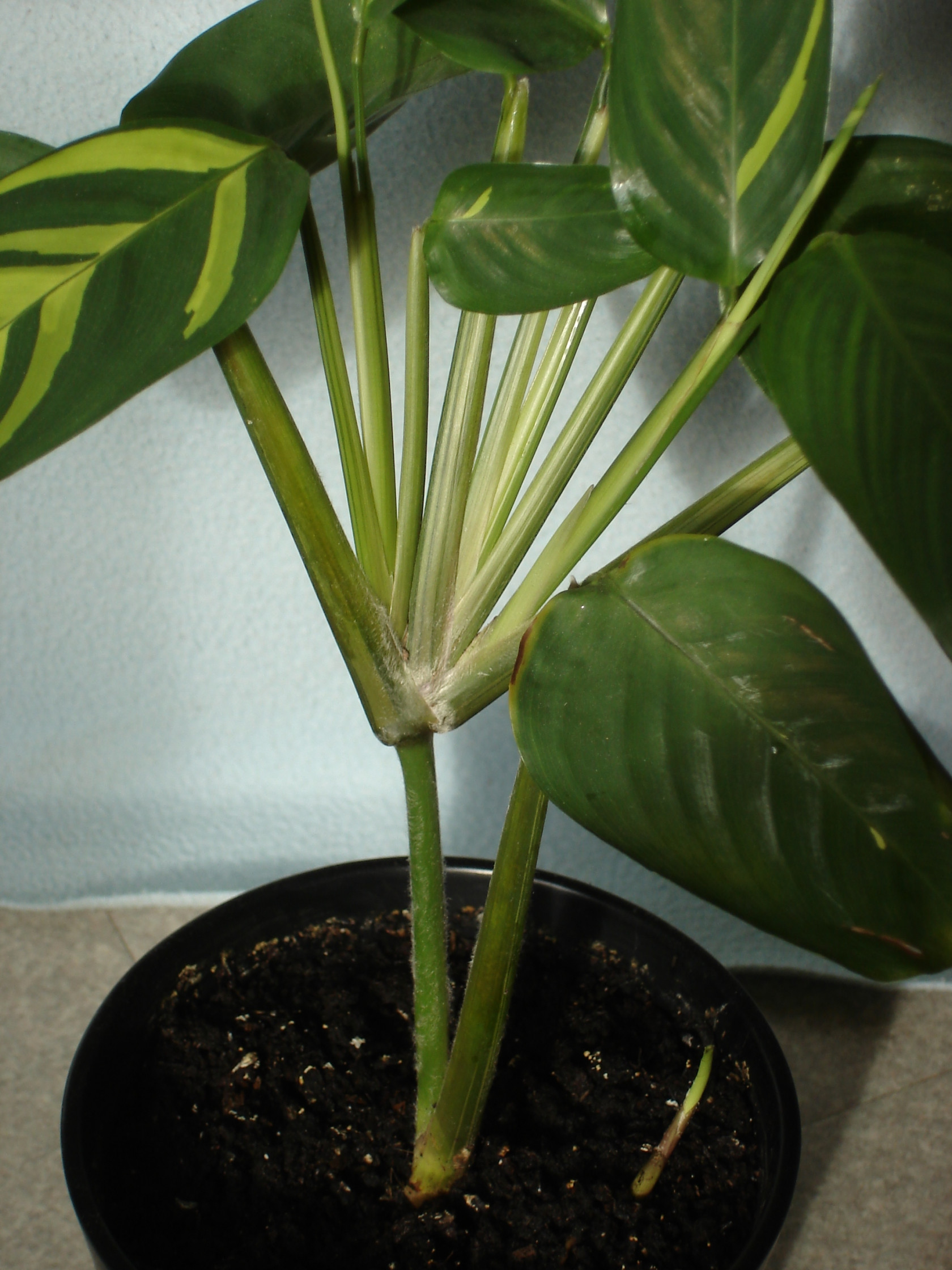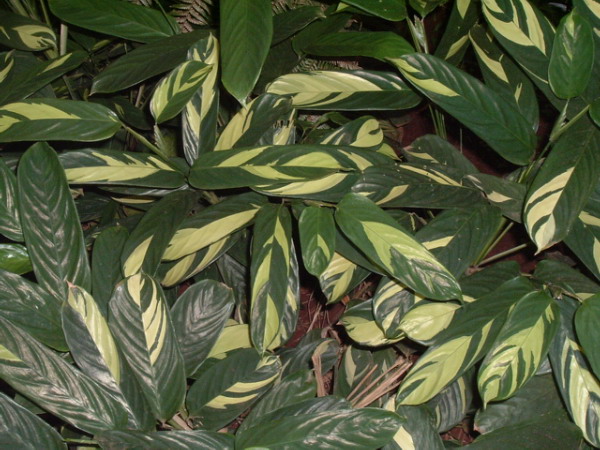Arrowroot
 Common Names: Arrowroot, West Indian arrowroot, Bermuda arrowroot
Common Names: Arrowroot, West Indian arrowroot, Bermuda arrowroot
Scientific Name: Maranta arundinacea
Climate: Temperate and warm
Plant Description: It is a perennial, smooth and erect plant. It has shallow roots and produces cylindrical tubers that penetrate deeper into the soil. It has small, white flowers supported by spikes.
It has thin, branched aerial stems that can reach 1.5 m in height and scaly and horizontal underground stems (rhizomes).
Leaves are alternated at the base and along the aerial stems, 6 to 25 cm long and 3 to 10 cm wide.
It is native to the Orinoco basin in South America.
Cultivation: It is grown in shady places. Must be watered in such a way as to keep the substrate constantly moist during the period from spring to summer. During the rest of the year the watering should be less, just enough to keep the substrate slightly damp.
It grows in warm weather at altitudes from 0 to 1800 meters above sea level. There can be no frost, as it requires a very long growing season to mature.
Multiplication by division. Between May and August, the plant is removed from the pot and the fleshy roots are delicately separated, taking care not to damage them, separate cuttings of about 10 cm long, each one provided with 2-3 leaves that are cut just below a node are removed.
You have to be very careful not to damage the roots because they are very delicate, do not use your hands, it is better to use a sharp knife to avoid fraying the tissue, clean and disinfected (preferably flame with alcohol or bleach) to avoid infecting tissues and disinfect at each cut.
Usually 3 cuttings are planted per pot, which should be small, no more than 8 cm, in a compost made up of a part of peat and coarse sand. Holes are made with a pencil and installed. Take care to then gently compact the substrate. The pots are located in a warm and bright place but not directly in the sun with a slightly humid substrate.
When the new shoots start to appear, it means that the plants have stuck and can be treated as adult plants. Plants are sown at a distance of 40 cm between plants.
It is usually harvested at 10-12 months, when the vegetation begins to turn yellow. The optimal age for the roots that will be used to extract the dust is just over a year.
When arrowroot is grown and it begins to die in the fall, it means that it goes dormant in winter and revives again in the spring, just like ginger. That is the time to separate the roots. After a year of growth they will give at least a half dozen harvestable roots.
 Uses: Edible root, properties similar to potatoes. The dried and ground root is used as a thickener in soups or as talc. It is used in the human diet in the form of sponge cakes, jams, cakes or boiled with some wheat flour, as an easily digestible food for children and people with dietary restrictions. It has relatively more protein than other tropical food sources such as yams, potatoes, cassava, plantains, etc.
Uses: Edible root, properties similar to potatoes. The dried and ground root is used as a thickener in soups or as talc. It is used in the human diet in the form of sponge cakes, jams, cakes or boiled with some wheat flour, as an easily digestible food for children and people with dietary restrictions. It has relatively more protein than other tropical food sources such as yams, potatoes, cassava, plantains, etc.
Currently starch and peeled rhizomes are used to heal ulcers and wounds.
Soothing, demulcent and nutritious easily digestible food, it is beneficial for the convalescent and those with weak digestion, it helps to relieve heartburn, indigestion and colic. It is slightly laxative.
An infusion of the root has traditionally been used to treat urinary infections. The root has also been used as an antidote to poison, in powder form it has been used as an ointment or poultice, especially combined with an antiseptic herb such as myrrh (Commiphora spp.) To treat smallpox pain.
It is commonly found in gardens as an ornamental plant.
Plagues and illnesses: Caution must be taken to remove old or dead leaves to make room for new shoots and prevent them from becoming a vector of parasitic diseases. Dull leaves are a symptom of excessively low temperatures. The remedy is to locate the plant in a warmer place.
Faded leaves are a classic sign of too much light. You have to locate the plant in a more shady place.
References:
Cómo crecer Maranta arundinacea--hierbas Basics. (n.d.). Home & Garden. Retrieved September 13, 2020, from http://hogar.98905.com/plants-flowers-herbs/herb-basics/1008025817.html
Fern, K. (n.d.). Maranta arundinacea. Useful Tropical Plants. Retrieved September 13, 2020, from http://tropical.theferns.info/viewtropical.php?id=Maranta+arundinacea
Maranta arundinacea (arrowroot). (n.d.). Cabi. Retrieved September 13, 2020, from https://www.cabi.org/isc/datasheet/32455
Maranta arundinacea Arrowroot PFAF Plant Database. (n.d.). Plants for a Future. Retrieved September 13, 2020, from https://pfaf.org/user/Plant.aspx?LatinName=Maranta+arundinacea
Mazza, G. (2018, February 8). Maranta arundinacea. Monaco Nature Encyclopedia. https://www.monaconatureencyclopedia.com/maranta-arundinacea-2/?lang=en
En español: Arrurruz
